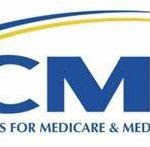Elevating Patients Care & Maximizing Facility Reimbursement
The Opportunity: Medicaid is a major source of funding for many nursing homes. CMI analysis is crucial for understanding how the acuity and needs of a beneficiary affects reimbursement. A higher CMI directly correlates with increased Medicaid payments which covers the cost of patient care.
Changes on the Horizon: States have an additional two years after October 1, 2023, to implement PDPM methodology. This implies that Medicaid will no longer recognize RUG-III or RUG-IV for federal assessments after PDPM adoption.
Here is what we know so far:
- Effective July 1, 2024, Kentucky will implement PDPM methodology for Medicaid.
- Rates effective 1/1/2024 are calculated using RUGs. Rates effective 4/1/2024 will be frozen at the prior quarter’s rates (those effective 1/1/2024). Beginning 7/1/2024, rates will be calculated using PDPM. Rebasing provider rates is also being considered. Additional calculation details to be released.
- Ohio will continue to determine direct care rates using RUG-IV for this biennium.
- Effective 10/1/2023, RUGs case mix scores could only be calculated from the Optional State Assessments (OSA). After 10/1/2023, providers were allowed to freeze their case mix for the biennium, thereby eliminated the need for OSAs.
-
- No additional information is available for Indiana or Michigan at this time.
Current Methodology: By benchmarking facility data compared to state and national averages and breaking down report components, we as a team can better assess how we measure up in terms of resident acuity and case-mix. This information guides quality improvement initiatives in a targeted manner.




Leave a Reply
Want to join the discussion?Feel free to contribute!